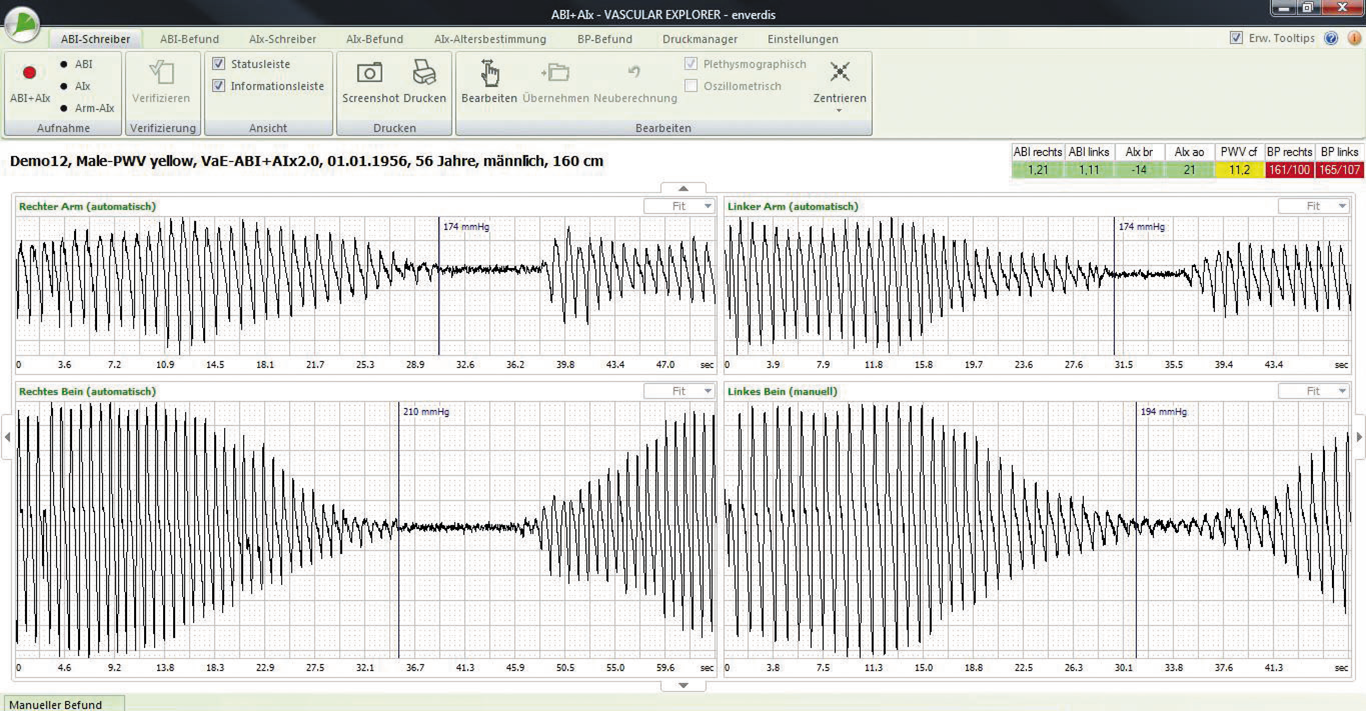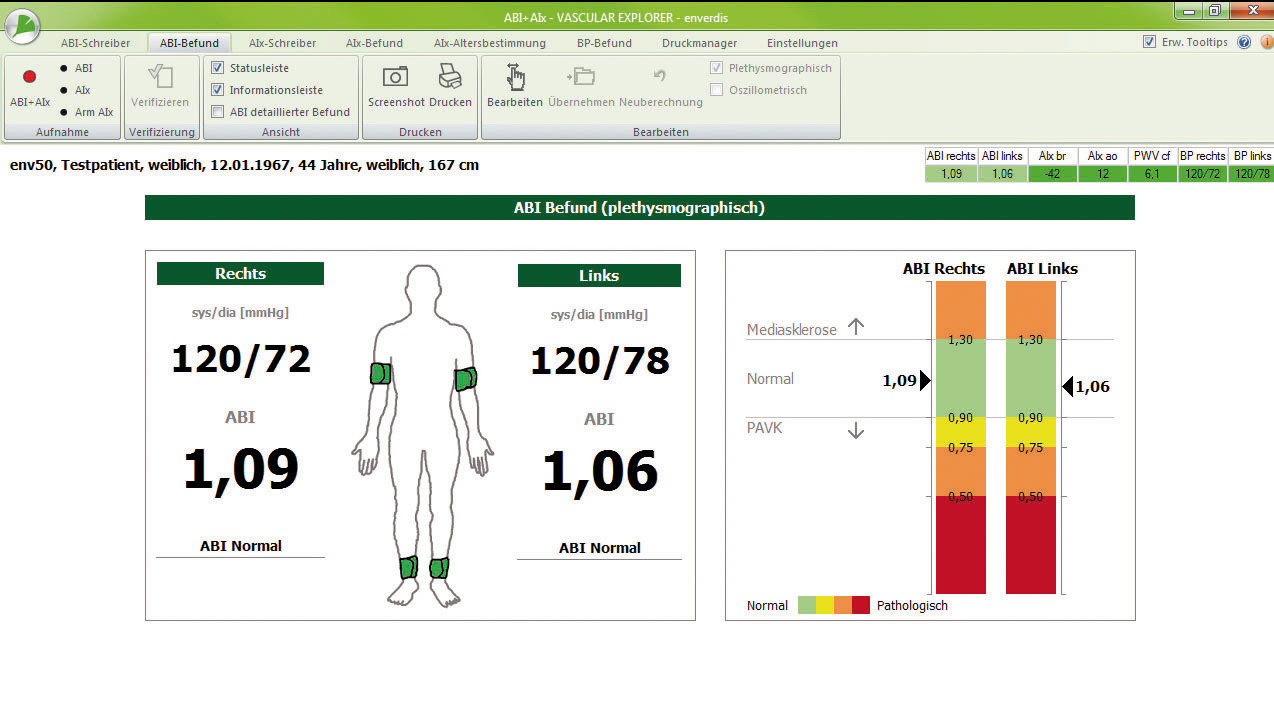Ankle Brachial Index (ABI)
Automatic and precise determination of ABI for diagnosing Peripheral Arterial Occlusive Disease (PAOD) and peripheral arteriosclerosis based on vascular closing pressures.
The system features a new, reliable measuring procedure to determine vascular closing pressures based on the simultaneous recording of a pressure curve and a distal plethysmography.

Photoplethysmographic ABI determination
The precision of this method is comparable to the gold standard (manual determination of the vascular closing pressure using a pocket Doppler). However it is significantly faster, automatic and objective. In an enverdis study of PAOD patients, the correlation coefficient for ABIs measured by this method and the gold standard of Doppler pressure or Doppler ABI was 0.93. enverdis was able to replicate results comparable to those of studies published by others. It was also confirmed that the correlation of ABIs based on normal, oscillometrically measured systolic blood pressures was significantly lower, especially for PAOD patients (the literature cites correlation coefficients of 0.4-0.6 for PAOD patients compared to Doppler ABI).
The ABI is the General Practitioner’s Method of Choice for Diagnosing and Screening for PAOD:
- The normal value is between 0.90 – 1.30.
- Mild PAOD is present at an ABI of 0.75 – 0.90.
- Moderate PAOD is present at an ABI of 0.50 – 0.75.
- Severe PAOD is present at an ABI of less than 0.50.
 ABI evaluation and presentation of the determined blood pressures
ABI evaluation and presentation of the determined blood pressures
Diabetics represent an exception. Because medial sclerosis reduces or prevents compressibility of the arteries, the ankle artery pressures measured are very high.
Therefore, at an ABI greater than 1.3, the tentative diagnosis of medial sclerosis can be rendered.
Patients with chronic renal insufficiency also frequently have medial sclerosis.
PAOD Should Not Be Taken Lightly
About 1 of 5 persons over the age of 65 is suffering from a peripheral artery occlusion disease (PAOD)
, i.e. ABI is less than 0,9 and bloodflow in the legs deteriorates. However, just 20% of the persons concerned show classic symptoms of a claudatio intermittens (pain during walking and lack of oxygen in legs and feet). For a long time most of the people concerned are free of symptoms. But often not only blood vessels are narrowed, but also central arteries, which supply heart and brain. Therefore there is an increased risk of cardiac infarction and stroke.

Phase 1: non-symptomatic PAOD – no pain, therefore PAOD is often diagnosed accidentally

Phase 2: Claudatio intermittens – pain in legs, calves, thighs or buttocks while walking long distances

Phase 3: Rest pain – pain in feet or legs at rest, often when lying down

Phase 4: Necrosis – tissue injury and ulcer which may end in amputation
The ABI is the General Practitioner’s Method of Choice for Diagnosing and Screening for PAOD:
- The normal value is between 0.90 – 1.30.
- Mild PAOD is present at an ABI of 0.75 – 0.90.
- Moderate PAOD is present at an ABI of 0.50 – 0.75.
- Severe PAOD is present when the ABI is less than 0.50




